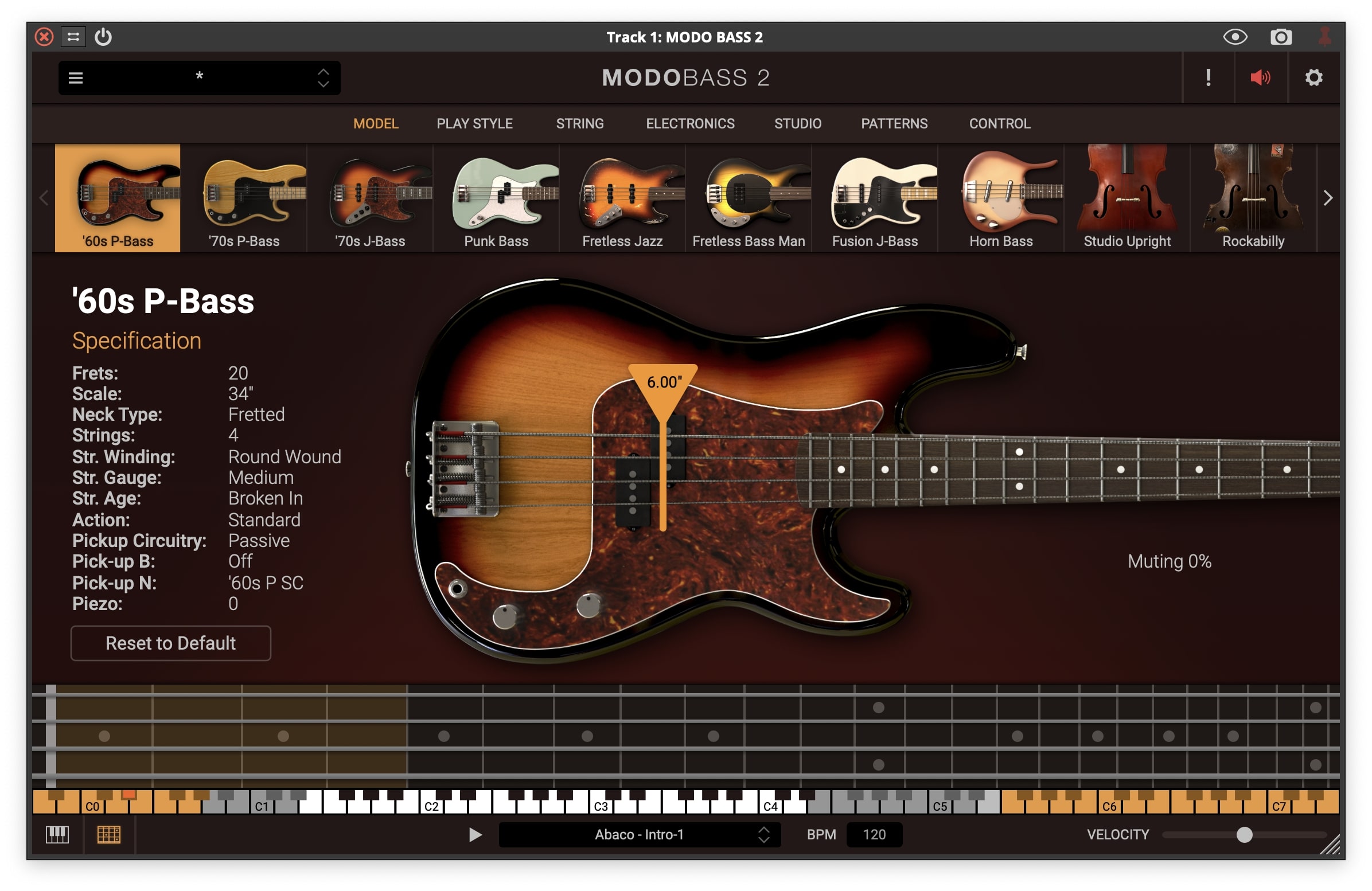Buy TASCAM 388, get a free gift with purchase:
TASCAM 388
Legendary tape tone
The TASCAM 388 was a large format studio in one unit. It featured a standard mixer with full faders along with a tape machine section, which could perform 8-track multi-track recording. The sound of the 388 is described as "magic" by many musicians, becoming legendary over the years.
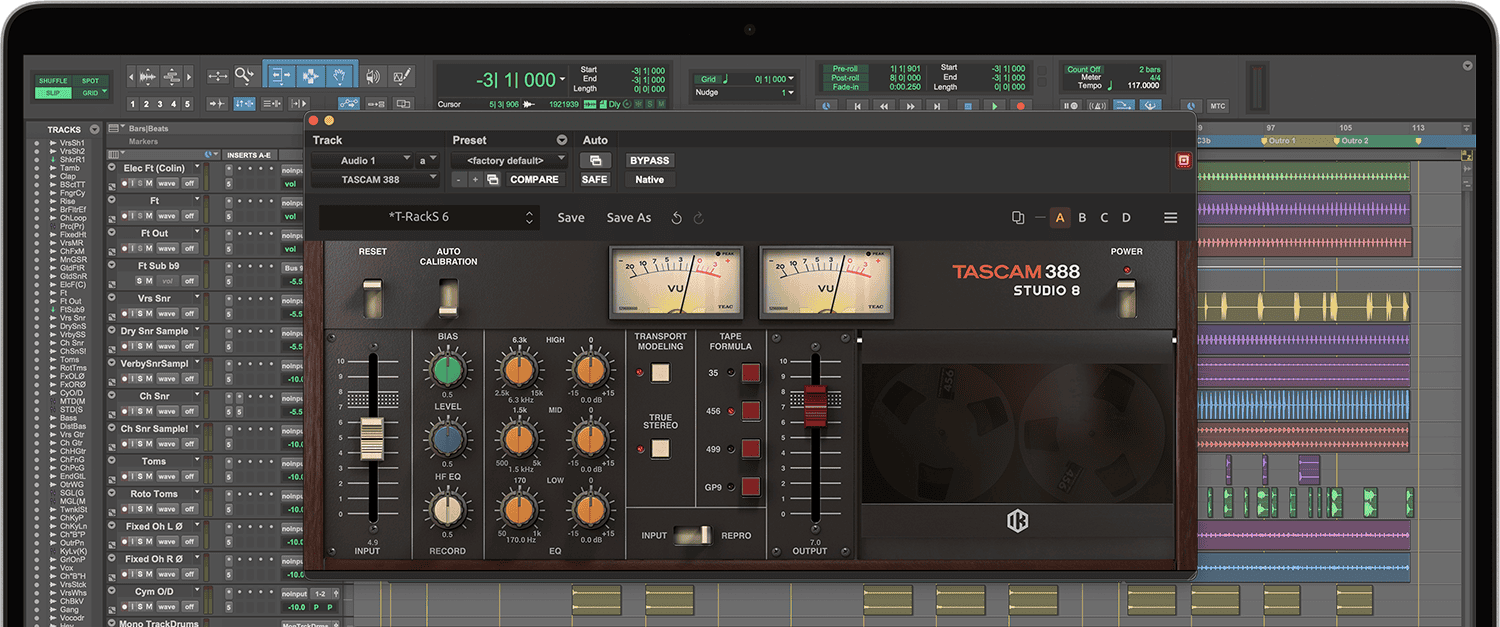
The TASCAM 388 remains the most sought-after tape recorder ever made by TEAC or TASCAM. You can easily spend $5,000 or more for a working unit today. You'll find in this officially certified plug-in version, for a fraction of the cost, the original's tone-tweaking controls and exactly the right sonic flavor to enhance your next musical production.
Intuitive, easy-to-use controls
The T-RackS TASCAM 388 features 1 channel of the mixer and the warmth and vibe of the original tape deck, along with some additional features. You can adjust the bias and EQ of the record head, tweak the channel's 3-band parametric EQ and choose from 4 tape formulas for a variety of tape flavors. We've included a number of presets and you can easily save your own.
To each its own sound
The TASCAM 388 was a huge success, combining a console and tape machine in one to create a real winner. Kelley Stoltz made the 388 famous again around 2001 when he used it to record some hit songs and their sound went viral. Ever since, the 388 has kept its magic status.
Re-creating the magic
Analog tape audio recorders are complex systems. They impart magic to the audio material, lifting the art within the music to a higher level. They add musicality to music.
What a tape machine adds to the audio is the result of a number of interactions amongst several interdependent factors. More than just saturation, compression, or EQ alone, these factors work together, one affecting each other with the dynamics of music, adding a “movement” that goes into the soul of what we perceive.
Decades of music produced on these pieces of artful human engineering have tailored the way we think music should sound. It’s imprinted in IK's DNA. Trying to recreate this magic in the digital domain has been attempted since the early days of real-time audio plug-ins, with various degrees of success.
From TASCAM DNA to IK DSP
For the T-RackS TASCAM Tape collection, each machine was chosen specifically by TASCAM and TEAC themselves, recommending particularly sought-after models from their history and helping IK source the best-sounding units. Each machine then went through a complete restoration to bring them perfectly back “to spec” before the scientific modelling process started.
IK’s DSP engineering team then took each stage apart, analyzed them in-depth, and produced a model of the entire magnetic tape-recording process. This model works in symbiosis with a powerful dynamic convolution engine to capture the essence of the real machines, faithfully bringing the complete picture of these complex analog engineering marvels to the digital realm.
The program coming out of these units is very similar to the one coming in, just better. It's subtle, but the impact is anything but.
And the T-RackS TASCAM Tape collection faithfully brings all this magic right to your DAW.
4 magic formulas
Choose from 4 different tape formulations, each with its own unique tone:
- 35: Modelled after the BASF LPR35, this is the formula TASCAM recommends for enhancing the great tone of the TASCAM 388.
- 456: Modelled after the Ampex 456 formula, this model went into production around 1974. Perhaps the most widely used tape, it contributed the most to what is considered “the” tape sound. It offers a warm, round tone with a slight touch of saturation that greatly responds to the recording level.
- GP9: Modelled after the Quantegy GP9 formula, this tape accepts higher levels of signal with minimal distortion and compression. It’s very punchy and perfect for modern, high quality analog recordings.
- 499: Modelled after the Ampex 499 formula, this tape is designed to handle a great amount of level with minimal distortion and compression. It also exhibits added high frequency definition that makes it perfect for printing “digital-like” recordings, while still maintaining an analog sound.
Comprehensive Controls
All Tape Machine Collection plug-ins share the same set of controls to enhance the ease of use and allow for quick A-B comparisons among them. Key features include:
- Signal path selection: With “Input,” the signal only passes through the input and output electronic stages of the recorders, bypassing the tape. Depending on how the recorder is designed, the “Input” path can sound extremely transparent or just slightly more colored. “Repro” passes your signal through the entire analog recording system: input-> recording amplifier -> recording head -> tape -> playback head -> playback preamplifier -> output stage.
- True Stereo: Even a perfectly aligned tape machine will have slight level, EQ and distortion differences between the left and right channels. This is good and part of the analog recording mojo! The T-RackS Tape Machine Collection perfectly recreates these subtle differences to deliver the real experience. If perfectly identical left and right channel processing is a must, simply disable this feature.
- Tape Speed: Select the speed of the tape transport between 15 and 30 inches per second (“ips”). The higher speed gives you more fidelity, and the lower speed delivers a warmer, rounder tone.
- Transport Modeling: Precisely models the behavior of the mechanical transport. Small irregularities in the movement of the tape creates various degrees of sonic alteration to the audio program, especially between the two channels. Keep it on for the magic to happen! In case a perfectly steady performance is needed, just disable the control.
- Record Bias: Ideal bias voltage settings provide maximum sensitivity and low distortion. Intentionally overbiasing is a common technique to produce a warmer, gently saturated sound. Underbiasing can be used to nicely boost the high frequencies in a truly unique way and add distortion and other nonlinear effects.
System Requirements
Mac® (64-bits)
- Minimal: Apple M1 or Intel® Core i5 Processor, 8 GB of RAM, macOS® 10.15 or newer (macOS 11 or newer required for Apple Silicon Processors). 9 GB of hard drive space.
- Requires an OpenGL 2 compatible graphics adapter.
- Supported Plug-in formats (64-bit): Audio Units, VST 2, VST 3, AAX.
Windows® (64-bits)
- Minimal: Intel® Core i5 Processor or equivalent, 8 GB of RAM, Windows 10 (64 bit) or newer. 9 GB of hard drive space.
- Requires an ASIO compatible sound card.
- Requires an OpenGL 2 compatible graphics adapter.
- Supported Plug-in formats (64-bit): VST 2, VST 3, AAX.
Important note: Internet connection is required as all of the Custom Shop operations are web based.
Installation
1. Go to https://www.ikmultimedia.com/products/productmanager/#download or click 'Download' in your Plugin Boutique User Account.
2. Download the relevant installer by clicking on the Windows or Mac download buttons.
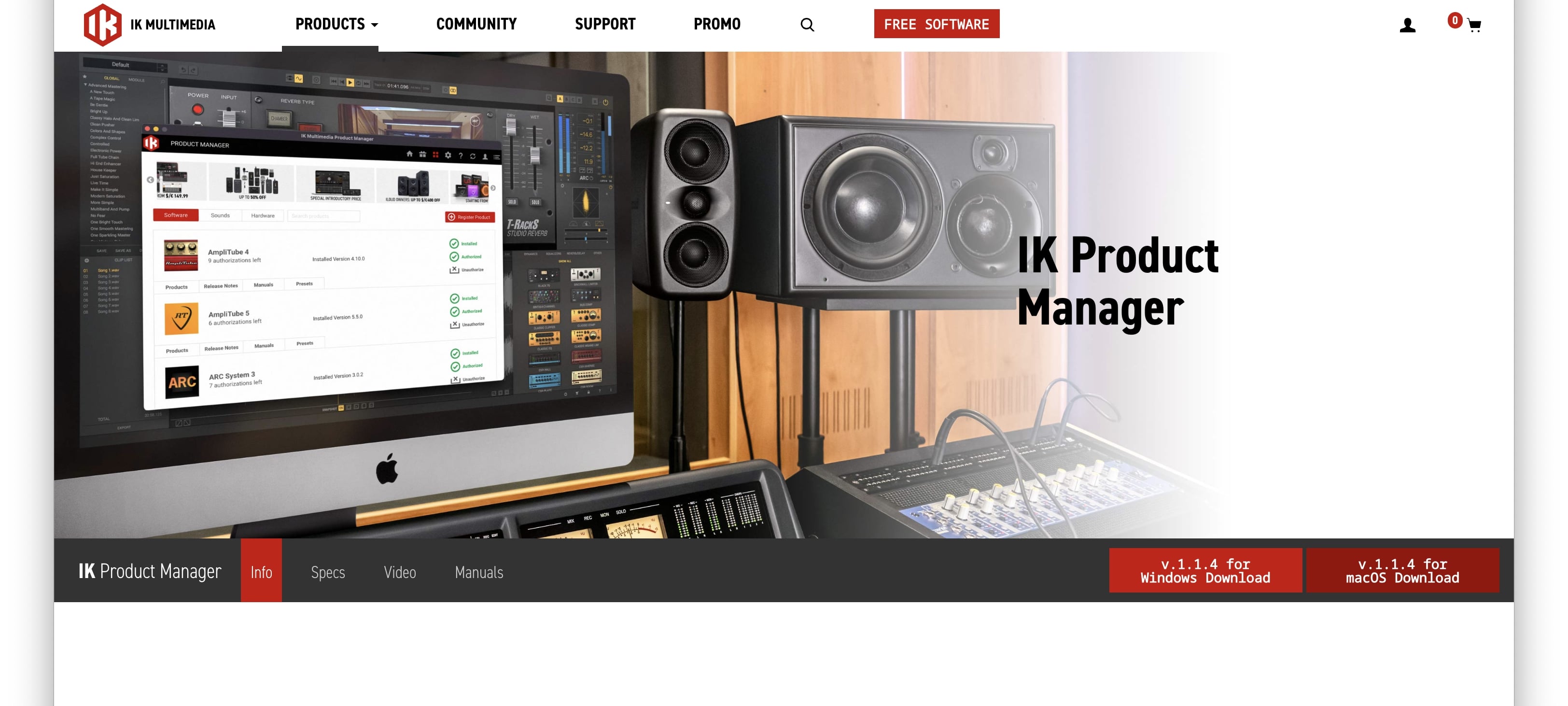
3. Install the IK Multimedia Product Manager > Open once installed.
4. Click 'Create Account' > If you already have an IK Media account, skip to step 7.
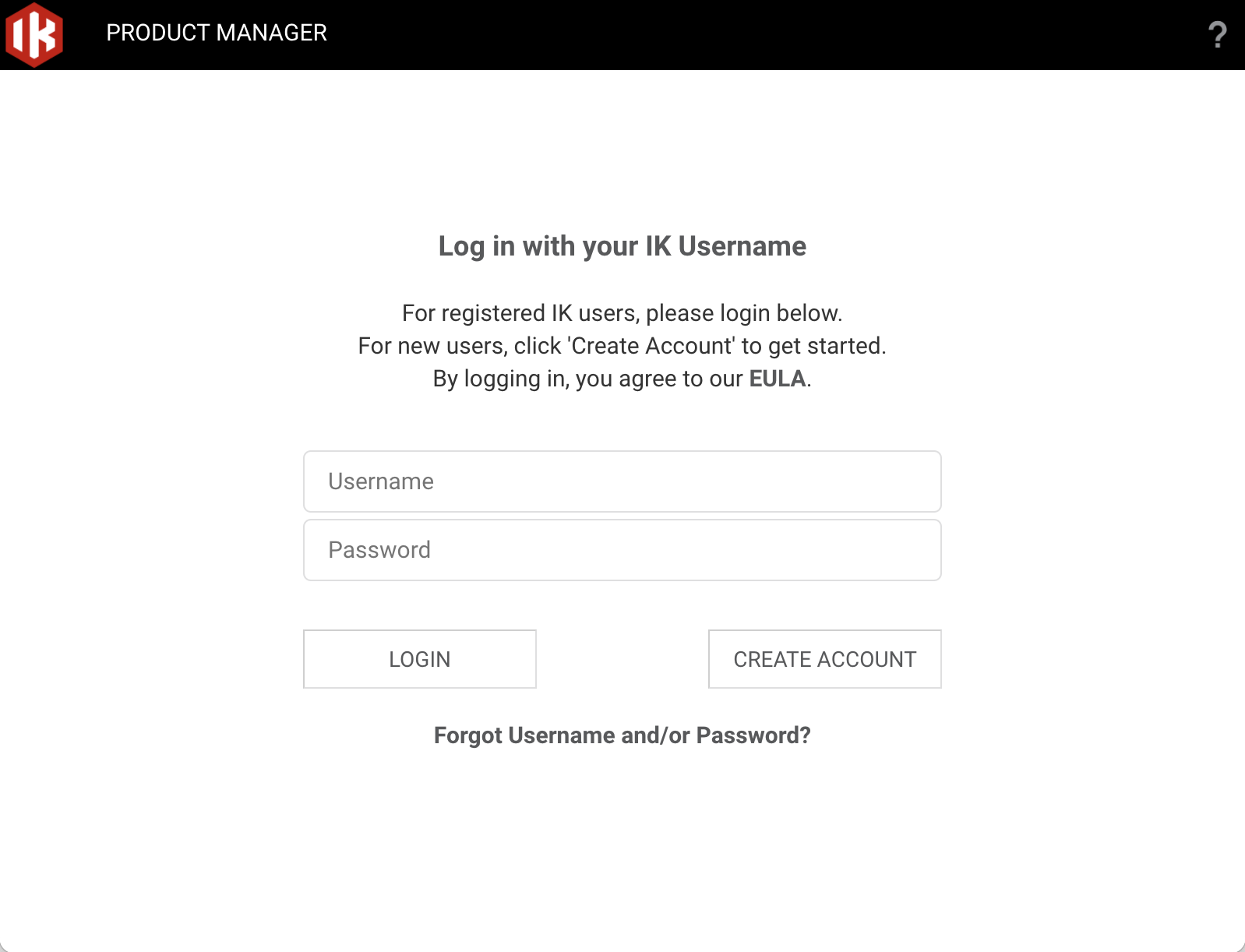
5. Enter the requested information > Click 'Register'.
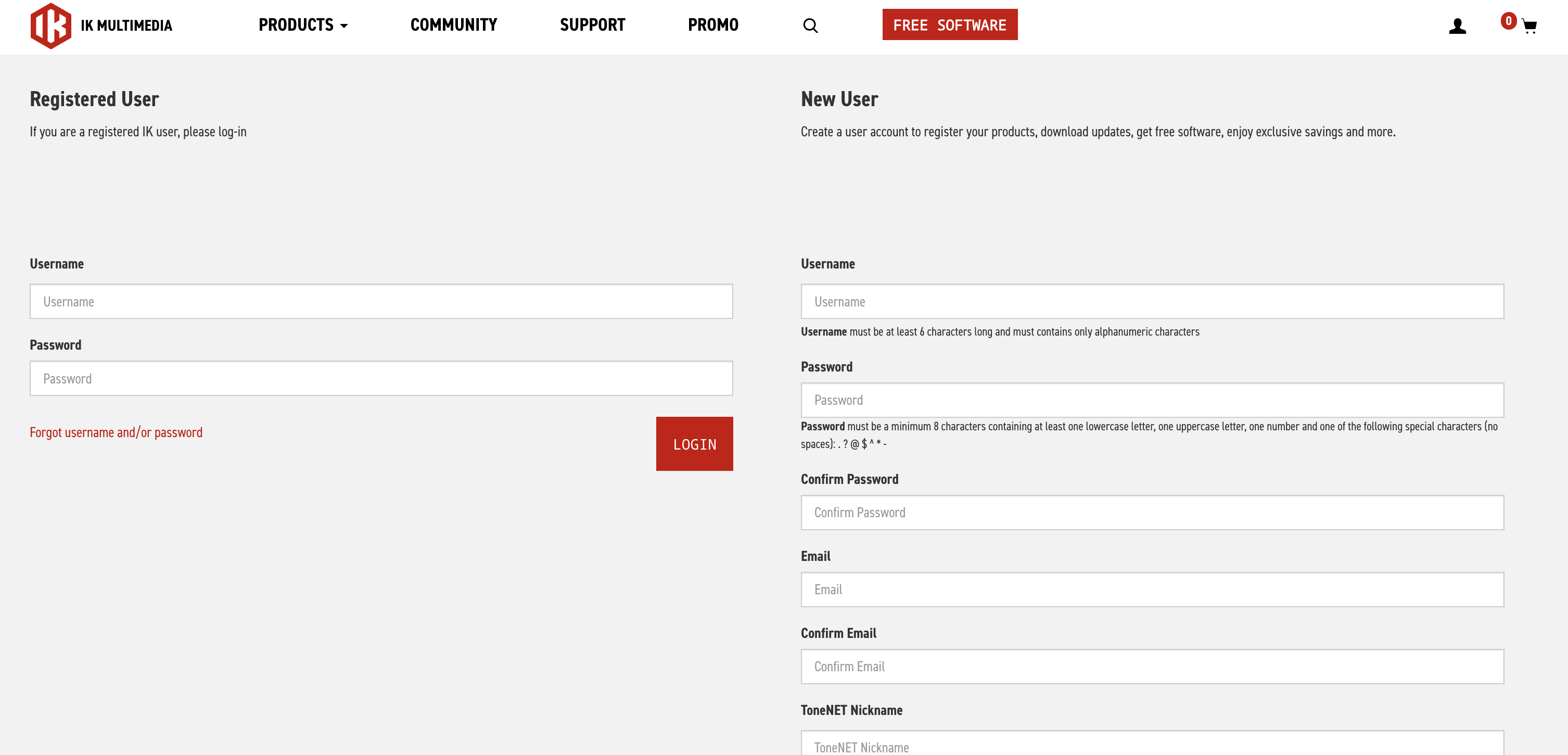
6. Open your email and locate the conformation email from IK Multimedia > Click the conformation link.
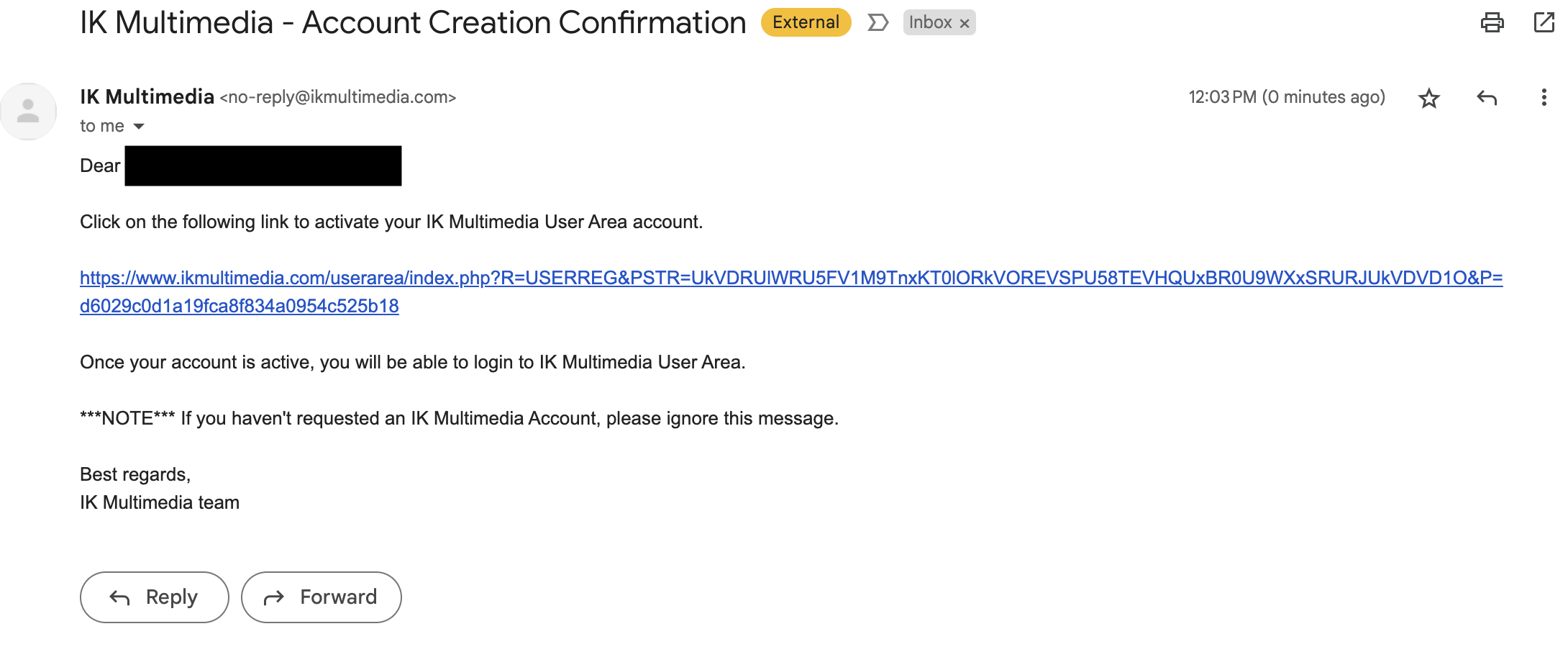
7. Head back to the Product Manager and log in with your newly created account details.

9. Click 'Register'.
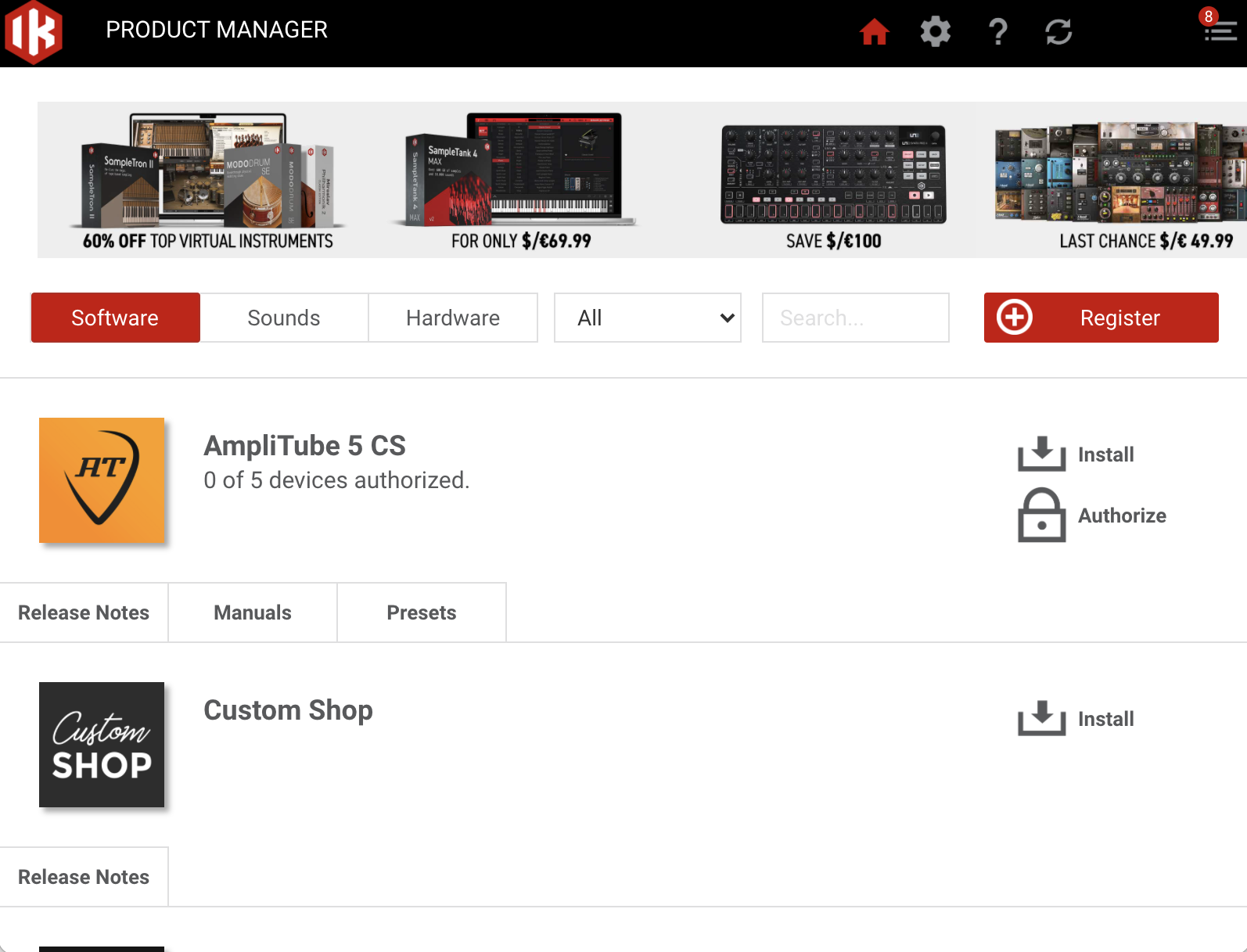
10. Enter the Serial Number in your Plugin Boutique User Account > Click 'Register'.
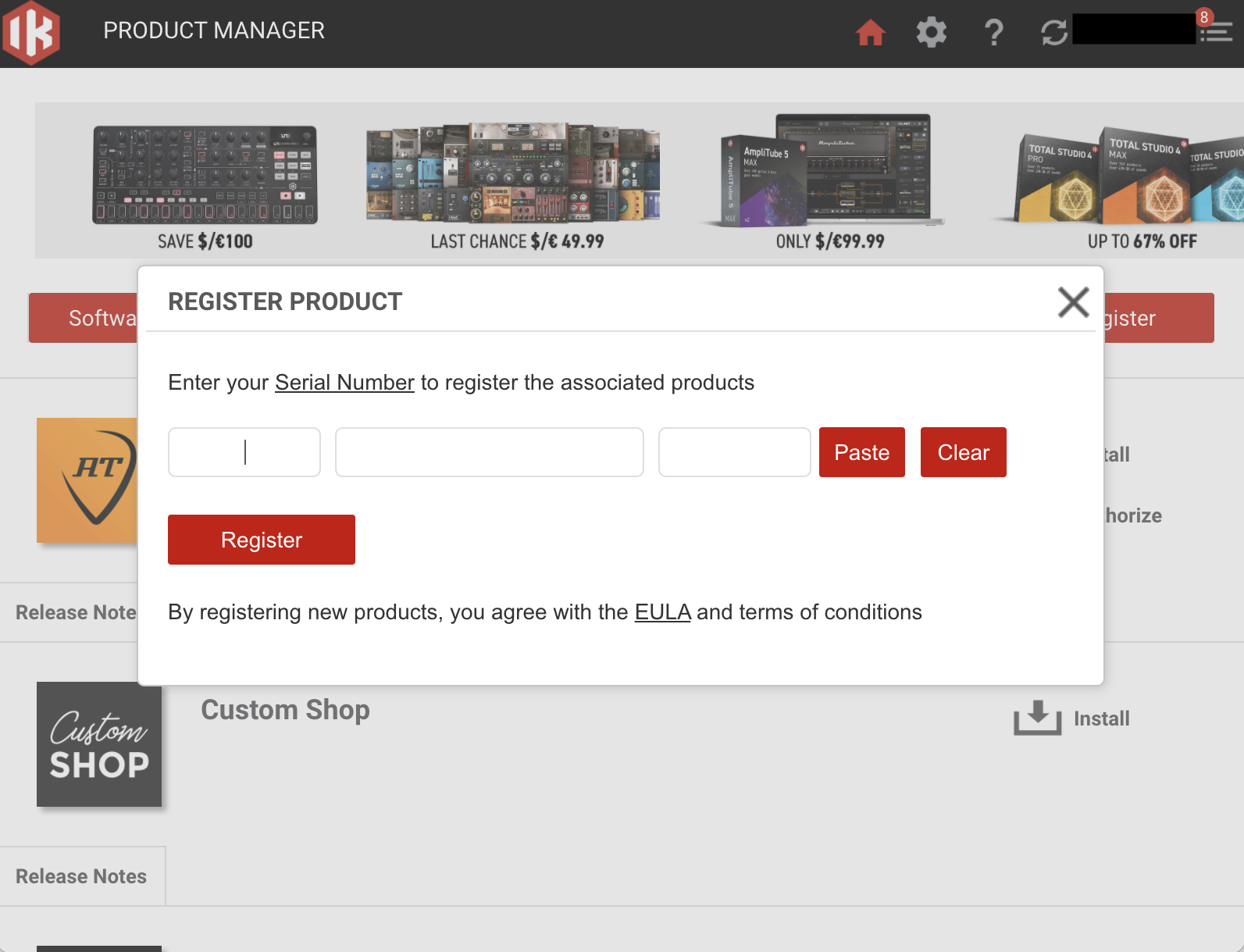
11. Click 'Install' on the plugin you wish to install.
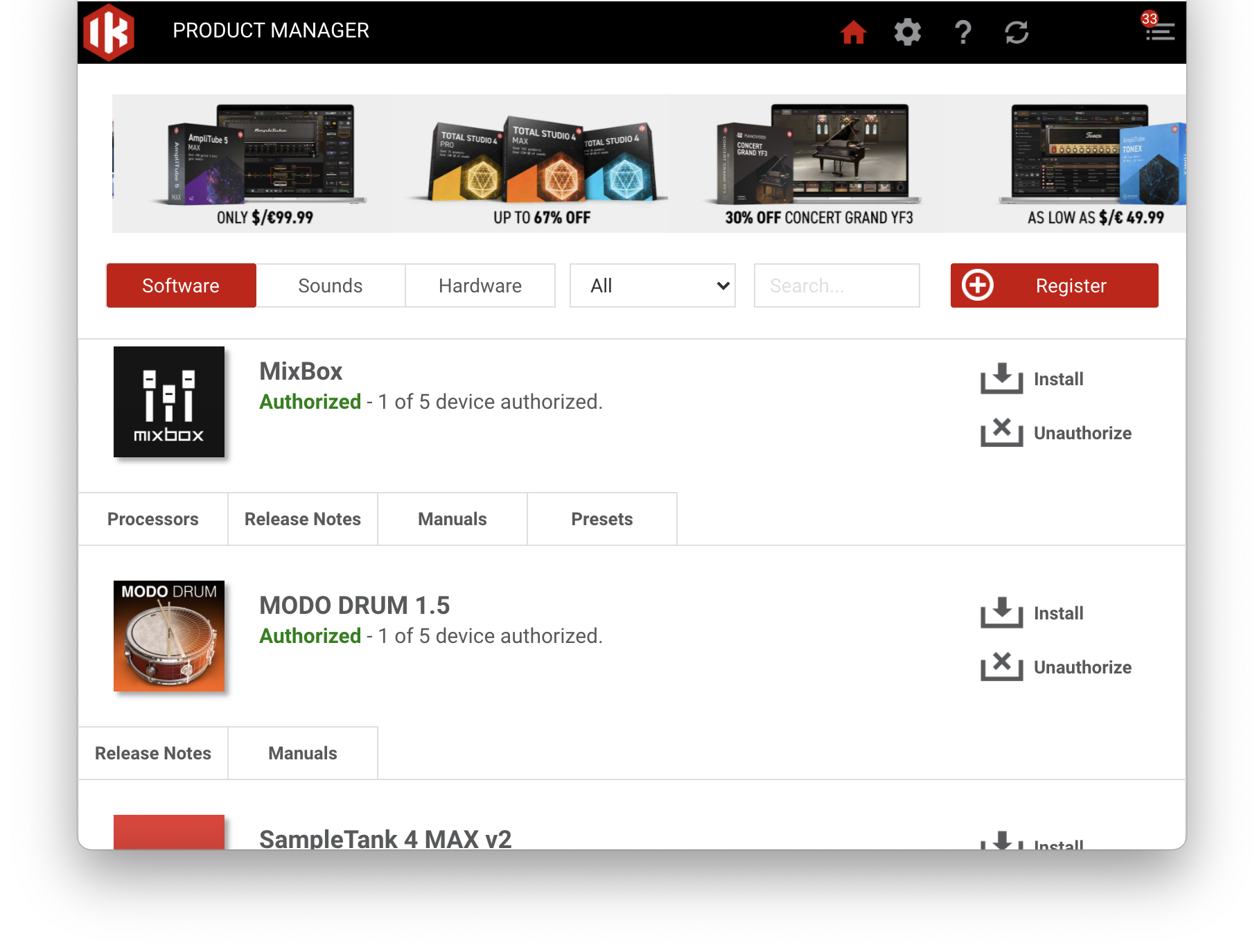
Your plugin is now installed and ready to be used within your DAW!
